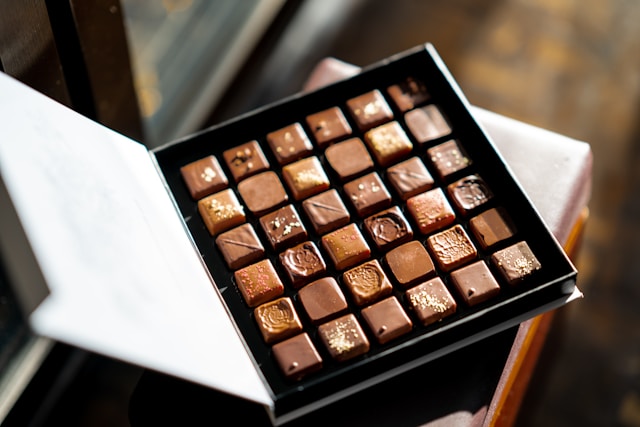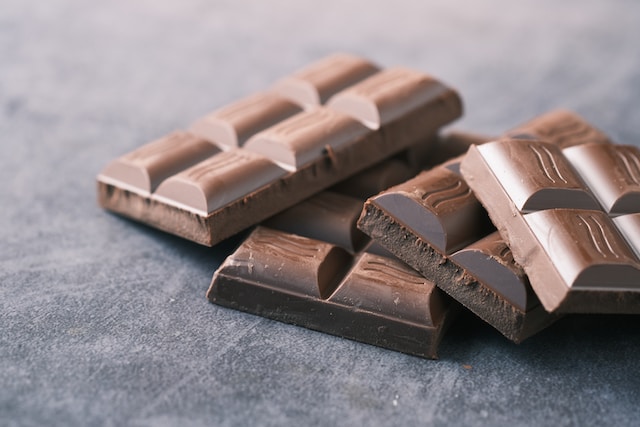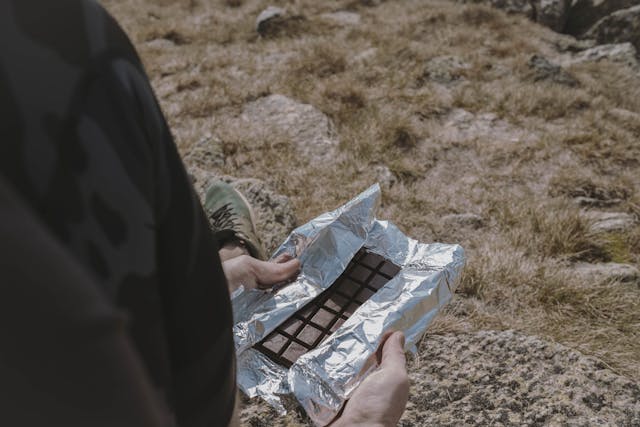
Top Benefits of Cacao for Beauty & Wellness
September 19, 2024
What Cocoa Percentage in Chocolate Says About Its Nutrition, Quality, & Price
October 5, 2024Fake Chocolate vs. Real Chocolate
How Much Do You Know?
Chances are, you’ve eaten—or at least—seen a fake chocolate product. And you probably thought it was real chocolate.
How do you tell the difference? And why should you even care?
By knowing the difference between real chocolate and fake chocolate, you’ll be able to make the right choice about the chocolate you buy or eat. Because your wallet matters.
Definition of Real Chocolate vs. Fake Chocolate: Global and Local Standards
Cocoa is the raw material for real chocolate, but the presence of cocoa does not define real chocolate. That is because the quantity of cocoa in chocolate matters. This includes both non-fat cocoa solids and cocoa fat (coca butter).
So what’s real chocolate?
Real chocolate is chocolate that contains the minimum amount of cocoa required by the law without exceeding the amounts of restricted additives.
That sounds like a mouthful? Don’t worry, we’ll make it digestible along the way.
According to the International Food Standards set by the FAO and WHO, chocolate must contain at least 20% total cocoa. Specifically:
Dark chocolate must contain at least 35% total cocoa (≥18% cocoa butter + ≥14%non-fat cocoa solids)
Sweet chocolate must contain at least 30% total cocoa (≥18% cocoa butter + ≥12% non-fat cocoa solids)
Bitter chocolate (para mesa) must contain at least 40% total cocoa (≥22% cocoa butter + ≥18% non-fat cocoa solids)
Couverture chocolate, at least 35% total cocoa (≥31% cocoa butter + ≥2.5%non-fat cocoa solids)
Milk chocolate must contain at least 25% total cocoa
Gianduja chocolate, at least 32% total cocoa
White chocolate, at least 20% cocoa butter
In all chocolate types, the amount of vegetable oils (if used) must not go above 5% of the total product after subtracting the weight of other additives.
Canada, the European Union, and the UK maintain these standards for cocoa content in chocolate. But in the US, the Food and Drug Administration asks for only a minimum of 10% chocolate liquor for all types of chocolate except for dark chocolate which must not have less than 35% total cocoa. Chocolate liquor is ground cocoa nibs with almost equal parts cocoa butter and cocoa solids. Important to note that the total cocoa content required by law is divided (not equally) between cocoa butter and cocoa solids.
Drawing from the above requirements we can now define fake chocolate.
Fake chocolate refers to products that mimic the taste, texture, and look of chocolate but do not meet the legal or traditional definitions of real chocolate based on their ingredients.
Fake chocolate does not have cocoa fat. Instead, it has cheaper vegetable fats such as palm oil, palm kernel oil, coconut oil, and others. Fake chocolate also has artificial chocolate-like flavours and colourings.
Nutella, a popular spread, contains only 7.4% fat-reduced cocoa, 0% cocoa butter, palm oil greater than 50%, hazelnuts 13%, and other ingredients and additives. You’ll be right to call Nutella a chocolate-flavoured hazelnut-palm oil spread, not chocolate.
READ: Healthy Palm Oil Free Nutella Alternatives

SPREAD is a delicious vegan Nutella alternative without palm oil and hazel nuts. Proudly made with sustainable cacao.
Palm oil is just one of the cocoa-butter alternatives out there. What else goes into fake chocolate?
Cocoa Butter Alternatives Used in Fake Chocolate
Real chocolate contains cocoa butter, the natural fat from the cocoa bean. Because cocoa is expensive (and cocoa butter has other uses in the cosmetic industry), manufacturers cut cost by using cocoa butter alternatives.
These alternatives fall into 3 categories based on their compatibility with cocoa butter: cocoa butter equivalents (CBE), cocoa butter replacers (CBR), and cocoa butter substitutes (CBS).
Common cocoa butter alternatives include palm oil, palm kernel oil, coconut oil, shea butter, and others. For use as alternatives to cocoa oil, these oils undergo different processing techniques.
One such technique is hydrogenation, a process where manufacturers add hydrogen to a liquid fat to enhance flavour and to extend the shelf life of products. Hydrogenated vegetable oils are not safe to consume when used in highly processed foods rich in sugar and salt.
Back to the definition of real chocolate:
Real chocolate has cocoa butter as the main fat. Fake chocolate has cocoa butter alternatives.
Common Names of Real Chocolate vs. Fake Chocolate
Chocolate labels may mean nothing unless you know the meaning of some of the terms and ingredients used.
1. Real Chocolate Labels/Terms
Dark Chocolate is made with non-fat cocoa solids and cocoa butter without milk and has a total cocoa content of 35% and above. Dark chocolate is also known as semi-sweet or bittersweet chocolate.
The percentage is usually indicated on the label. Dark chocolate, especially from 70%, is low in added sugar and high in health-beneficial cocoa flavonoids. Read our full guide on dark chocolate.
Milk Chocolate contains dairy milk along with cocoa solids and cocoa butter. It has a creamier texture and is sweeter than dark chocolate. There are also vegan alternatives like our 55% Milk Chocolate made with coconut milk.
White Chocolate does not have non-fat cocoa solids and is required to contain at least 20% cocoa fat. It’s made from cocoa butter, sugar, and milk solids, giving it a sweet and creamy taste. Nostradamus 35% is a toasted white chocolate with a caramelly taste.
Couverture Chocolate is dark chocolate with a higher percentage of cocoa butter compared to non-fat cocoa solids. It is often used for coating, moulding, garnishing, and dipping. The amount of cocoa butter in couverture chocolate is at least 31% compared to 2.5% of non-fat cocoa solids.
Sweet Chocolate is slightly lower in non-fat cocoa than dark chocolate but contains not less than 30% total cocoa.
Unsweetened Chocolate is pure chocolate liquor with no added sugar. It is bitter and is used primarily for baking or cooking, usually in recipes that require high amounts of sugar.
Gianduja Chocolate is chocolate made first with at least 32% chocolate and then finely ground hazelnuts as 20-40% of the final product. It can also be in the form of milk chocolate, in which case the cocoa is not less than 25% and the hazelnut is between 15-40%.
Cocoa Butter is the fat of the cocoa bean usually gotten by pressing ground cocoa beans (cocoa liquor).
Non-fat Cocoa Solid, sometimes just referred to as cocoa or cacao, is the part of the cocoa nib that remains after removing the cocoa butter. It can be natural or Dutch-processed, which means it is treated with an alkalizing agent to neutralize its acidity and enhance flavour.
Bean-to-Bar is a term that shows the chocolate maker controls the entire process of making the chocolate from cocoa beans instead of buying premade cocoa liquor or cocoa solids.
Tree-to-Bar, also known as farm-to-fork, farm-to-table, is a label indicating that the chocolate maker is also the cacao farmer. The major difference between tree-to-bar and bean-to-bar lies in how much of the supply chain the chocolate maker controls. The tree-to-bar chocolate maker controls the entire supply chain, and can effectively ensure sustainability, but the tree-to-bar chocolate maker only gets beans farmed and dried by another person.
2. Names of Fake Chocolate
Compound chocolate is made with vegetable fats, sugar, and cocoa powder, but lacks cocoa butter. Chocolate, by law, must have cocoa butter. That’s how white chocolate without cocoa solids is still considered chocolate.
Chocolate-flavoured describes products that smell like chocolate but are not chocolate. They use artificial flavours that mimic chocolate.
Characteristics of Real Chocolate vs. Fake chocolate
Several factors differentiate real chocolate from fake chocolate.
Ingredients: Real chocolate has sufficient cocoa, sweetener, and other essential ingredients like milk (for milk chocolate). Fake chocolate may use just enough cocoa to get a chocolate flavour and often replaces cocoa fat with cheaper vegetable oils. Because of its low cocoa content, fake chocolate contains more fillers.
Lack of cocoa content, especially cocoa fat: Real chocolate has a higher amount of cocoa (10-100%). Fake chocolate has a significantly lower percentage of dry cocoa solids, no cocoa butter, and may not have any cocoa at all.
Flavour and texture: Real chocolate has a creamy melt-in-the mouth texture thanks to cocoa butter, the natural fat from the cocoa bean. Lacking cocoa butter, fake chocolate may have a waxy or greasy mouthfeel. Texture also varies based on the type of alternative oil used.
The Making of Real vs. Fake Chocolate
Real chocolate has a distinct chocolate making process from bean to bar. Or should we say, from tree to bar? This is the process we use to make our farm-to-fork cocoa products including dark chocolates, a toasted white chocolate, and a dairy-free coconut milk chocolate.
Cacao harvesting: cacao beans are harvested from the cacao tree.
Fermentation: beans are fermented to develop flavour and aroma.
Drying: fermented beans are dried to remove excess moisture.
Roasting: dried beans are roasted to enhance flavour.
Winnowing: roasted beans are cracked and separated from shells.
Grinding: cacao nibs are ground into a fine paste called chocolate liquor.
Pressing (if white chocolate): chocolate liquor is pressed to separate cocoa butter and cocoa solids.
Conching: cocoa liquor is mixed with sugar, milk (for milk chocolate), and other ingredients.
Tempering: chocolate is heated and cooled to create a stable crystal structure for a smooth finish.
Moulding: chocolate is poured into moulds and allowed to set.
Packaging: chocolate is packaged and ready for consumption.
The process to make fake chocolate is not the same since manufacturers of fake chocolate use less dry cocoa solids and no cocoa butter. Fake chocolate does not need the tempering stage which is employed in real chocolate because of cocoa butter.
Mixing ingredients: this can include cocoa powder, but mostly vegetable fats, sugar, flavourings and fillers.
Conching: this stage is not as intense for real chocolate (because of little or no cocoa solids).
Moulding and cooling: fake chocolate does not require tempering as in real chocolate, but it can be poured to into moulds of various forms and shapes to suit the manufacturer or it can be used as coatings and fillers for other products.
Packaging: the final product is packaged, ready for the shelves.
Nutritional Comparison Between Real and Fake Chocolate
Nutritionally, there are big differences between real chocolate and fake chocolate.
Cocoa content: real chocolate has a higher percentage of cocoa and nutrients that contribute to its health benefits. These include antioxidants, minerals (like magnesium, iron, and zinc) and cocoa butter which has some healthy saturated fats. Fake chocolate has little to no cocoa.
Added sugar: real chocolate, especially dark chocolate with at least 70% cocoa, often has lower amounts of added sugar. Fake chocolate is often higher in added sugar and artificial flavourings.
Calories: both real chocolate and fake chocolate can be high in calories.
Health Benefits of Real Chocolate
Real chocolate, especially one with higher amount of cocoa, offers several health benefits when consumed in moderation and fit into a general healthy lifestyle.
We have covered some of these health benefits in detail in other articles. For a quick summary:
– Cocoa antioxidants fight against oxidative stress and reduce your risk of chronic disease.
– Cocoa improves heart health through increased blood flow, lower blood pressure, and improved cholesterol profile.
– Cocoa has psychoactive substances such as caffeine and phenylethylamine that can improve mood and feelings of wellbeing. Cocoa also stimulates the release of endorphins that alleviate feelings of stress.
Read more about cocoa’s health benefits in these other articles:
Science-backed Health Benefits of Drinking Hot Chocolate
Evidence-based Cacao Benefits for Beauty and Wellness
We use only organic, natural ingredients, with zero artificial additives or preservatives, to make our single origin, bean to bar chocolates.
The Environmental Impact of Fake Chocolate Production vs. Sustainable Chocolate-Making
Because fake chocolate uses cocoa oil alternatives, its environmental impact can be substantial. Palm oil, one of the main cocoa fat alternatives in fake chocolate, has a negative environmental impact. We’ve covered that in What’s the Big Deal About Palm Oil in Chocolate?
Other ethical issues to consider (which applies too for real chocolate) is ingredient sourcing and packaging. Which makes the issue of investigating brands you buy from very important. A great place is looking for Fair Trade certifications, but even better is buying from ethical tree-to-farm brands.
Our mission here at Bantu Chocolate is turning the broken system characteristic of the chocolate industry into a sustainable supply chain. We sustainably farm our cacao and make craft chocolate without artificial flavours and colours.
READ: How our Ethical Model Benefits the Farm Worker, the Environment, & the Consumer
How to Identify Real Chocolate vs. Fake Chocolate
Once you’ve known the differences, it is easier to spot fake chocolate from real chocolate.
1. Check ingredient list
Does the chocolate have cocoa? If yes, how much cocoa? Just having cocoa on the ingredient list is not enough. Real chocolate is high in cocoa while fake chocolate is not.
Is there cocoa butter? If no, you’re looking at cocoa fat alternatives. While regulation allows for vegetable oils in chocolate, the amount must not exceed 5% of the total product after subtracting the amount for other additives. And the chocolate should have cocoa butter.
2. Look for type of chocolate
Look for ‘dark chocolate’, ‘milk chocolate’, ‘white chocolate’, ‘bittersweet chocolate’, because these labels can only be used when the product fulfils the minimum requirement for cocoa.
Dark chocolate must be at least 35% total cocoa. In the European Union, the UK, and Canada, milk chocolate should have at least 25% total cocoa, and white chocolate 20% cocoa butter while the amount in the US is 10%.
3. Watch out for ‘chocolate flavours’ on the label
Products labelled as ‘chocolate-flavoured’ or ‘chocolatey’ use artificial flavours instead of the natural flavours from cocoa.
4. Investigate the chocolate maker
How do they source their cocoa beans? What type of chocolate products do they make? What’s their mission?
A Note on Natural vs. Artificial Chocolate Flavours
Real chocolate has a wide range of natural flavours, depending on cacao species, but more importantly on post-harvest processes like cocoa bean fermentation, drying, roasting, and conching. The most common real chocolate flavours are nutty, earthy, fruity, floral, sweet, and caramelly.
Artificial chocolate flavours are created in the laboratory by combining chemicals found in cocoa beans to mimic real chocolate. As these chemicals are synthetic, not natural, they fall flat, lacking the rich complexity and nuances of real chocolate flavours.
Can Fake Chocolate Ever be Safer Than Real Chocolate?
Although real chocolate is the real deal, there are situations where fake chocolate is preferable.
1. Cocoa allergies and intolerance
Allergies to cocoa solids or cocoa butter are not common, affecting only about 1% of the population in the US, but the symptoms can be life-threatening. On the other hand, cocoa intolerance mostly causes digestive system issues such as stomach pain, gas, diarrhoea, etc.
For people with allergies and intolerance to cocoa, fake chocolate made with alternative ingredients is a safer option.
2. Caffeine sensitivity
Fake chocolate contains little or no caffeine and theobromine. This makes it safer for people with caffeine sensitivity.
3. Vegan concerns
Chocolate is vegan friendly except for milk chocolate. Fortunately, there are plant-based milk chocolates that replace dairy with coconut milk, almond milk, oat milk, and hazelnut milk.
All our chocolates, bars and spread, are vegan friendly, including Limbe 55% Coconut Milk Chocolate.
Before we wrap up this guide, we must talk about another type of chocolate. Have you heard of lab-made chocolate?
Lab-Made Chocolate
Instead of cacao harvested from the farm, scientists now isolate cells from the cacao plant and feed them with nutrients in a laboratory.
The cells are guided to differentiate into cocoa-solids or cocoa-butter producing cells. In sufficient quantities, the grown cells are then turned into chocolate.
The future and impact of this novel technology remains to be seen. For now, lab-made chocolate is a far cry from traditional chocolate in terms of the diverse shades of real chocolate flavours.
However, makers of lab-grown chocolate believe their technology is a solution to the ills of the chocolate industry.
But is that true?
Larissa Zimberoff, writing for the Atlantic on lab-made chocolate, says, “fake chocolate isn’t necessarily our destiny. Several experts told me that we have the solutions to fix chocolate without going the lab-made route.” She goes on to talk about one of the solutions, which to anyone active in transforming the industry, it is not rocket science.
Cacao farmers need more disease resistant cacao varietals. But farmers also need good prices for their cocoa, which Big Chocolate is not willing to pay. A sustainable supply chain is the way to go in fixing the ills of chocolate.
READ: Why We Don’t Believe Lab-Grown Chocolate is the Solution
Our Commitment to Sustainable Chocolate
From our cacao farm to your fork, our processes ensure a sustainable supply chain. We grow cacao in Cameroon with regenerative agriculture and agroforestry, helping preserve biodiversity and soil health. We craft our chocolate in London and package our bars in biodegradable material. For our chocolate spread, we use reusable glass bottles.
As part of our sustainability practices, we make a cacao juice enhanced kombucha with cacao pulp. Cacao pulp often goes to waste during bean fermentation.
Key Takeaways
Real chocolate and fake chocolate may look so similar that consumers may not be able to tell the difference. However, great differences exist between the two. Real chocolate has enough cocoa to be labelled as chocolate. Fake chocolate has no cocoa or may have cocoa in insignificant amounts.
Real and fake chocolate also differ in physical characteristics like texture and flavours. Real chocolate has distinct chocolate flavours and a creamy melt-in-the-mouth texture. While fake chocolate has bland flavours and somewhat of a waxy mouthfeel.
By paying attention to product labels, ingredients, and brands, consumers can be able to tell whether what they’re buying is real chocolate or fake chocolate.
References
https://en.wikipedia.org/wiki/Couverture_chocolate
https://en.wikipedia.org/wiki/Types_of_chocolate#Legal_requirements_by_country/region
https://www.medicalnewstoday.com/articles/hydrogentated-oil#uses
https://link.springer.com/chapter/10.1007/978-981-16-5113-7_11
https://www.cocoterra.com/what-is-cell-based-chocolate/
Chocolate Extinction: Fact vs. Fiction + What Chocolate Lovers Can Do
Chocolate ExtinctionFact vs. Fiction, What Consumers Can Do Share On Facebook Twitter Email Is the world really running out of chocolate? Not really. Currently the global […]
Corporate Chocolate Gifting Ideas to Appreciate Employees and Delight Clients
Corporate Chocolate GiftingHow to Appreciate Employees & Delight Clients Share On Facebook Twitter Email When it comes to corporate gifting, a one-gift-fits-all approach just doesn't cut […]
Cacao Supper Club at Home: Guide to Tasting Chocolate, Cacao Tea, and Pulp Juice
Cacao Supper Club at HomeGuide to Tasting Chocolate, Cacao Tea, and Pulp Juice Share On Facebook Twitter Email Imagine gathering around the table with a few […]








